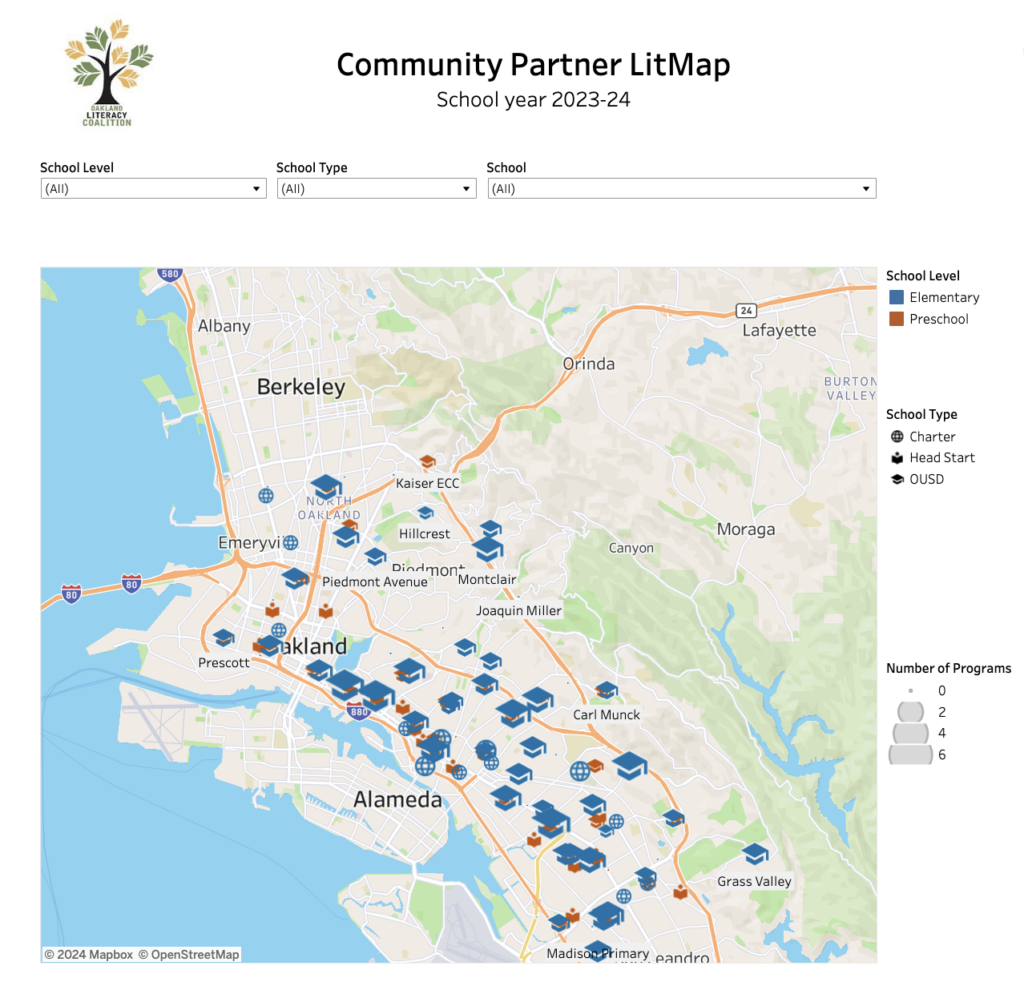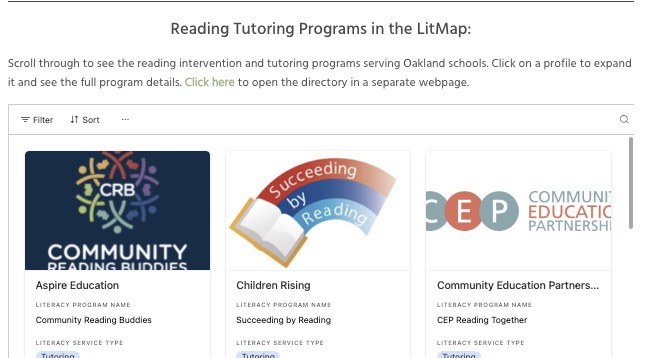Blog
Mapping Literacy Resources at Oakland Schools
Share
The OLC invites you to check out the latest updates to the LitMap! The intention behind this tool is to equip stakeholders with information about literacy partners and school sites in order to collectively meet the needs of Oakland students. We believe that students are set up for success when school leaders, decision-makers, educators, partner organizations, and community members are well-informed and work collaboratively.
In addition to the distribution of literacy programs, stakeholders can now gain deeper insight into the school contexts in which different community partners are operating. We’ve included key school demographic data for the ‘23-’24 school year, as well as midyear i-Ready reading assessment results. You will also find a link to our new Program Directory, which offers detailed information on each organization’s mission, model and areas of focus.
What’s Next?
Our upcoming LitMap iteration will explore the curricular resources, instructional staff and professional development available to support literacy across different schools. We will share bright spots where these factors are increasing student achievement and elevate areas in which opportunity gaps persist.
We hope the LitMap will continue to serve as a tool to support stakeholders in making data-informed and equity-focused decisions, in addition to fostering connections between literacy programs.
We are eager to hear your questions, suggestions, or feedback on this tool and invite you to connect by emailing celestina.lee@k12.dc.gov. Look out for communication about our next LitMap update!
High-level highlights:
Kindergarten through 5th grade students’ reading proficiency is assessed through i-Ready in the fall, winter and spring. Each student has a typical growth target, which represents the average growth achieved by students nationally and is determined by the student’s grade and fall diagnostic score.
This year, 50% of students across the district were on track to meet their i-Ready typical growth target at the midyear benchmark. These students achieved 60% or more of their annual i-Ready typical growth target during their midyear assessment and are making expected progress or more toward their spring goal. During the ‘22-’23 school year, 48% of students were on track at midyear.
Of the 42 OUSD elementary schools serving high percentages of low-income students, 17 (40%) outperformed the district average and saw over half of their students on track to meet their growth goals. Nearly all of these schools have partnerships with current Oakland Literacy Coalition Members, including FluentSeeds, Children Rising, Girls Inc., Tandem, Aspire Education, Springboard Collaborative, Chapter510, Always Dream, Reading Partners and Raising a Reader.
While district progress toward growth targets reveals important literacy gains, moving students toward proficiency remains the ultimate goal. 33% of K-5 students were reading on grade-level at midyear, as compared to 34% last school year at the same benchmark. By the end of last school year, 27.9% of students were reading on grade-level. We will update this year’s spring data as achievement and growth assessment results become available.
For further reading, you can learn which schools are accelerating growth in GoPublic Schools’ 2024 Gaining Ground Report. This report highlights students that have already met or exceeded an entire year’s growth at midyear and explores subgroup performance for Black, Latinx and English Learner students.
Note: A previous version of this post reported that 44.1% of students were reading on grade-level at the end of the 22-23 school year. While 44.1% of students were reading within grade-level, only 27.9% performed in the mid-late range on i-Ready, which is necessary for proficiency at the final testing benchmark.





